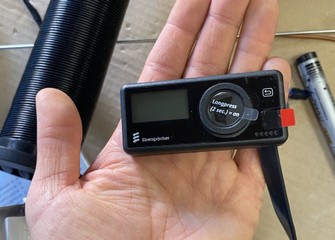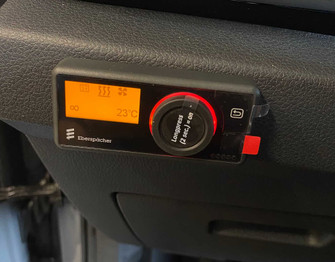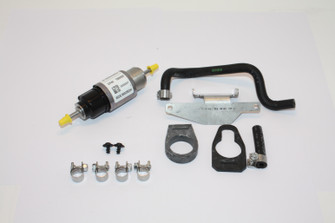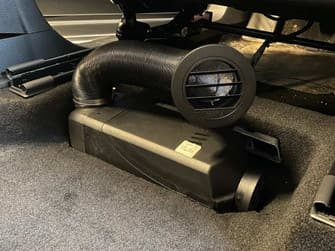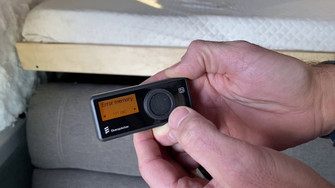Inverters, converters, transfer switches, and inverter chargers for your RV
Posted by Heatso on 26th May 2023
There are three crucial components that complete your solar power system and the solar array. These components are the inverter, battery converter/charger, and transfer switch. These essential devices protect and manage your power system, allowing you to extract the most from your solar panels.
INVERTERS, CONVERTERS, TRANSFER SWITCHES, AND INVERTER CHARGERS FOR YOUR RV
There are three crucial components that complete your solar power system and the solar array. These components are the inverter, battery converter/charger, and transfer switch. These essential devices protect and manage your power system, allowing you to extract the most from your solar panels. In this guide, we’ll cover each device in detail and look at the different variants that make up your electrical system.
ON THIS PAGE
WHAT IS AN INVERTER?
If you want to use your coffee pot, microwave or simply charge your laptop in your RV without being connected to shore power, you need an RV inverter. Your batteries supply 12V Direct Current (DC) power, whereas most of your household appliances use Alternating Current (AC) power. The main function of an RV power inverter is to “invert” 12V DC battery power into 120V AC power for your AC-powered devices.
It’s important to remember that an inverter can only supply as much power as is stored in your battery. Also, an inverter can only convert a limited amount of Watts at a time. For example, a 1000W inverter cannot power a 1500W electric space heater.
TYPES OF INVERTERS
There are two types of inverters to choose from for RVs: Modified Sine Wave (MSW) Inverters and True Sine Wave (TSW) Inverters.
True Sine Wave Inverters
True sine wave inverters, like shore power, alternate smoothly with a sinusoidal curve with a rounded peak and a rounded valley. Pure sine wave inverters are nearly identical to household AC power and will run electronics and appliances quietly, cleanly, and smoothly. TSW is often the better choice, as it delivers a more consistent signal when compared to the choppier modified sine wave signal.
Modified Sine Wave Inverters
Modified sine wave inverters are a more affordable solution for running common resistive loads like toasters, coffee makers, or power tools. MSW produces spontaneous peak voltage for a few milliseconds, drops to zero, then drops to the valley. Many modern devices won’t run well or even at all on a modified sine wave.
WHAT IS A BATTERY CONVERTER/CHARGER?
Although charging your batteries with solar panels is ideal, sometimes you must rely on shore power. The only problem is that your batteries are either 12V or 24V DC, while shore power or a generator produces 120V AC. A converter charger is the only way to charge your RV battery system using shore or generator power.
An RV converter charger is the direct opposite of an inverter. Instead of converting DC to AC, battery chargers convert 120V AC to 12V DC power to charge your batteries. In addition to charging your batteries, the converter distributes converted DC power to other RV components.
Is it worth getting an after-market converter?
While a battery charger is usually included in most RVs, the quality and reliability are often subpar. Lower-quality converters can lead to unexpected expenses: you might have to use the generator more often or wait longer for your batteries to charge. A cheap converter can also be detrimental to the lifespan and capacity of your battery.
TYPES OF BATTERY CHARGERS
Charging a battery is like filling a tire - the Amps have to be “pushed in”, meaning that the charger's voltage should be higher than the voltage inside the battery. Much like with a tire, the voltage inside the battery increases as the battery fills up. This means that ideally, the voltage in the charger should also change to continue filling the battery.
There are two types of converters: single-stage and multi-stage. Single Stage charging is a common charging method in most low and mid-range motorhome battery chargers.
Single-stage converter
Single-stage chargers charge your battery at a fixed voltage. When the battery is low, many Amps flow in. As the battery fills up, its internal voltage increases, slowing the charging rate. This might lead to longer charging times, especially for the last 10% - 20% of the battery.
Multi-stage converter
Multi-stage charging is a more effective method that’s used in smart converters. Usually, there are three stages: bulk, absorption, and float.
- During the bulk charging state, the charger maintains a dynamic voltage to quickly charge the battery up to about 60-80%.
- During the absorption stage, the RV battery charger maintains a constant voltage and lets the battery passively absorb current until the battery is at 100%.
- Once the battery is fully charged, the charger switches to Float mode. The charger maintains a voltage that is sufficient to keep the battery at 100% without overcharging.
Overall, three-stage RV battery chargers are significantly better than single-stage chargers. Multi-stage converters charge the battery faster when it’s low and are better for your batteries in the long run.
WHAT IS A TRANSFER SWITCH?
An automatic transfer switch controls and automatically switches between the various power supplies of an RV. For example, a transfer switch can change between AC power coming from your battery through an inverter and AC shore power. It also ensures that the electricity in the RV is not supplied simultaneously to prevent backflow to one of the sources.
An automatic transfer switch has many useful functions. It is a switching controller between your power sources, monitors the power supply, and protects your system from sudden overloads and backflows.
INVERTER CHARGERS AND THE 5-IN-1 POWER HUB
Inverters combined with smart power converters are called inverter chargers. An RV power inverter charger can charge your battery bank with shore power and provide power to run household electronics from your batteries. Some inverter chargers even have transfer switches built in.
The Power Hub, which is at the center of the EcoFlow Power kits, is a cutting-edge 5-in-1 appliance. It combines two MPPT controllers, a DC-to-DC converter, and an inverter charger all in one. The Power Hub can automatically switch between 4 separate methods of charging and can support up to 15,000Wh of batteries.
RELATED PRODUCTS
CONCLUSION
In summary, inverters, converters, and transfer switches are all essential for your electrical system. If you’re going off-grid and want to continue using AC appliances or want to charge your batteries from the sun, now you know how. And if installing your own circuitry sounds daunting, get the EcoFlow Power kit and enjoy the freedom of off-grid power.

